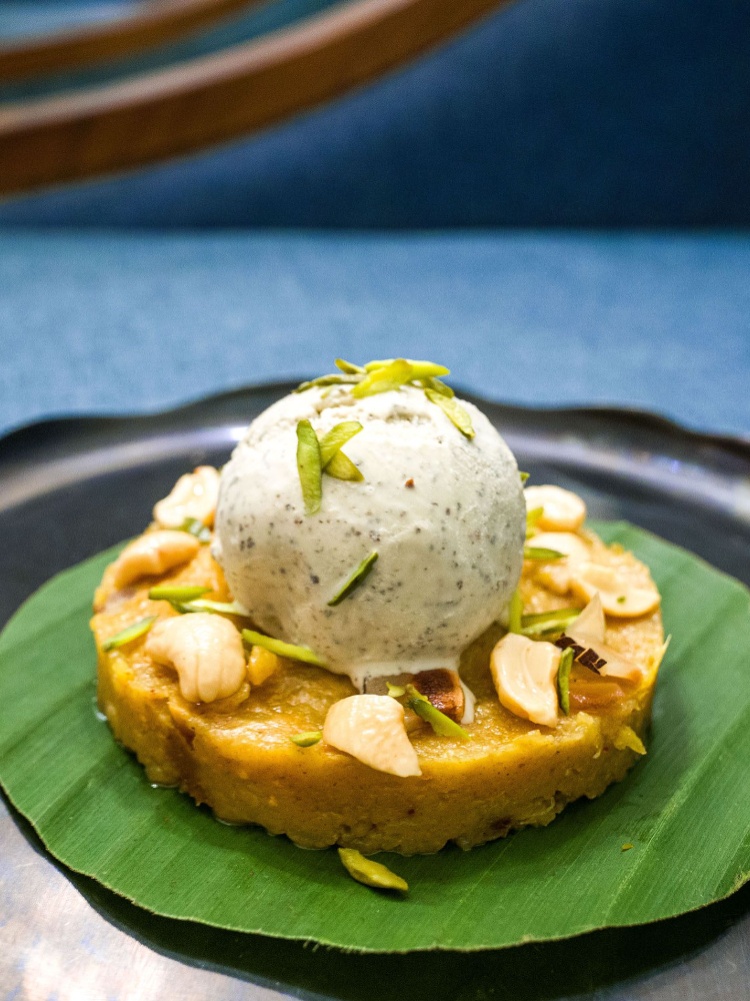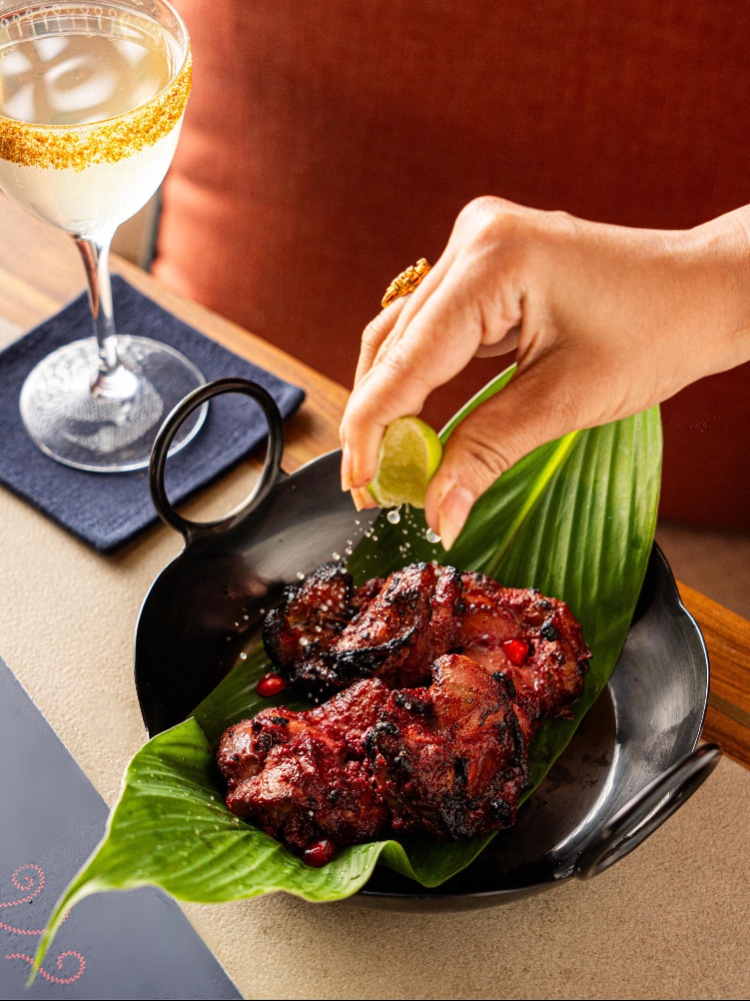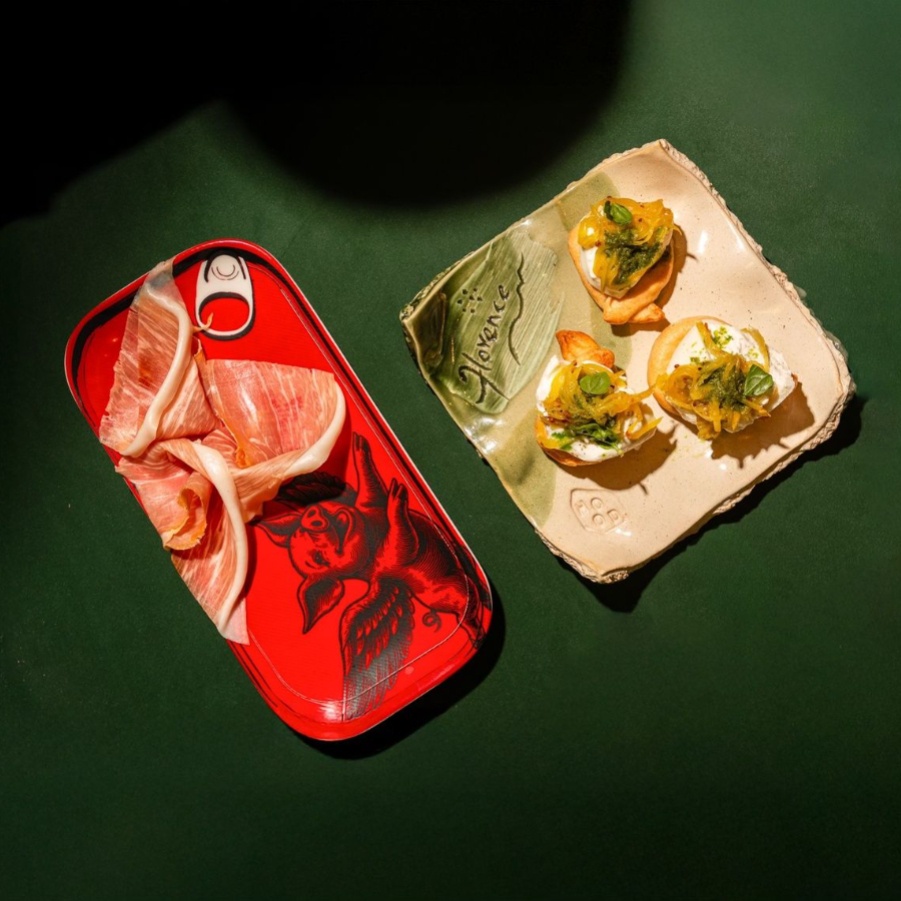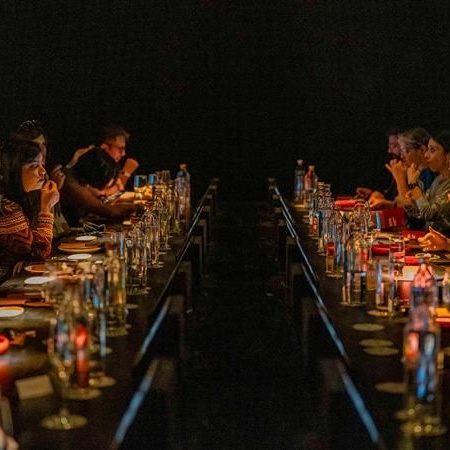There are plenty of dishes on Waarsa’s menu that are uniquely chef Mukhtar Qureshi—dishes not served at any other restaurant, Awadhi or otherwise. Take the Murdusha Teekha Tamatar Salan, a dish that sprung from his mother’s melding of her Lucknowi ancestry and her Mumbai home. The recipe’s ladyfish, tomatoes, coconut milk, and kokum come from her coastal upbringing. Its spice blend, featuring mathania mirch, elaichi, and saunf, is from her Awadhi heritage. Then there is the startling Sabz Santra Shorba, another Mukhtar signature, lightened and carried forward from Neel and Ummrao—the kitchens he has previously helmed.
Waarsa, Aditya Birla Dining’s new Awadhi restaurant at Mumbai’s NCPA complex, is led by Qureshi and ABNAH’s creative and culinary director chef, Rahul Akerkar. Not to be found here are the typical cream- and nut-laden overspiced gravies or greasy tikkas pooled in slicks of fat. And you don’t miss it—whether it’s the delicious vegetarian Lauki aur Channa Daal Shikhampuri, or the Kasundi Baingan Tikka made buttery in a tandoor, or the moreish Daal Q-Man (named after Qureshi, of course) that is made of slow-cooked meticulously vetted kid goat, in black masoor, dill, and bathua. His food offers lighter variations inspired by everyday home cooking. It’s the sort of Awadhi food we could (and did) have seconds of, in all our three visits, without suffering later.

Most astonishing among the offerings is the Raasawal Muzaffar, an indefinable dessert of caramel-ly scented rice. It is neither kheer (it contains no milk) nor halwa, but shares characteristics of both, and tastes like something familiar, yet entirely new.
At Waarsa, Qureshi begins his raasawal like a risotto. Short-grained, buttery Gobindobhog rice is sautéed in ghee before it’s cooked in a liquid of clarified sugarcane juice and flavoured with cinnamon and dates. To cut the sweetness, Qureshi spikes the reduced juice with chunks of orange flesh. There is a tadka poured over it, of nariyal gaari (dried coconut), charoli, and cashews, fried in butter. The thickened rice pudding is then scented with saffron, kewda, and coconut water, and the whole thing is gently, slowly cooked until it reaches a scoopable, mouldable consistency that yields at the touch of a spoon. Qureshi’s suffix for his version, Muzaffar, comes from the use of nawabi ingredients in this rustic dish.







